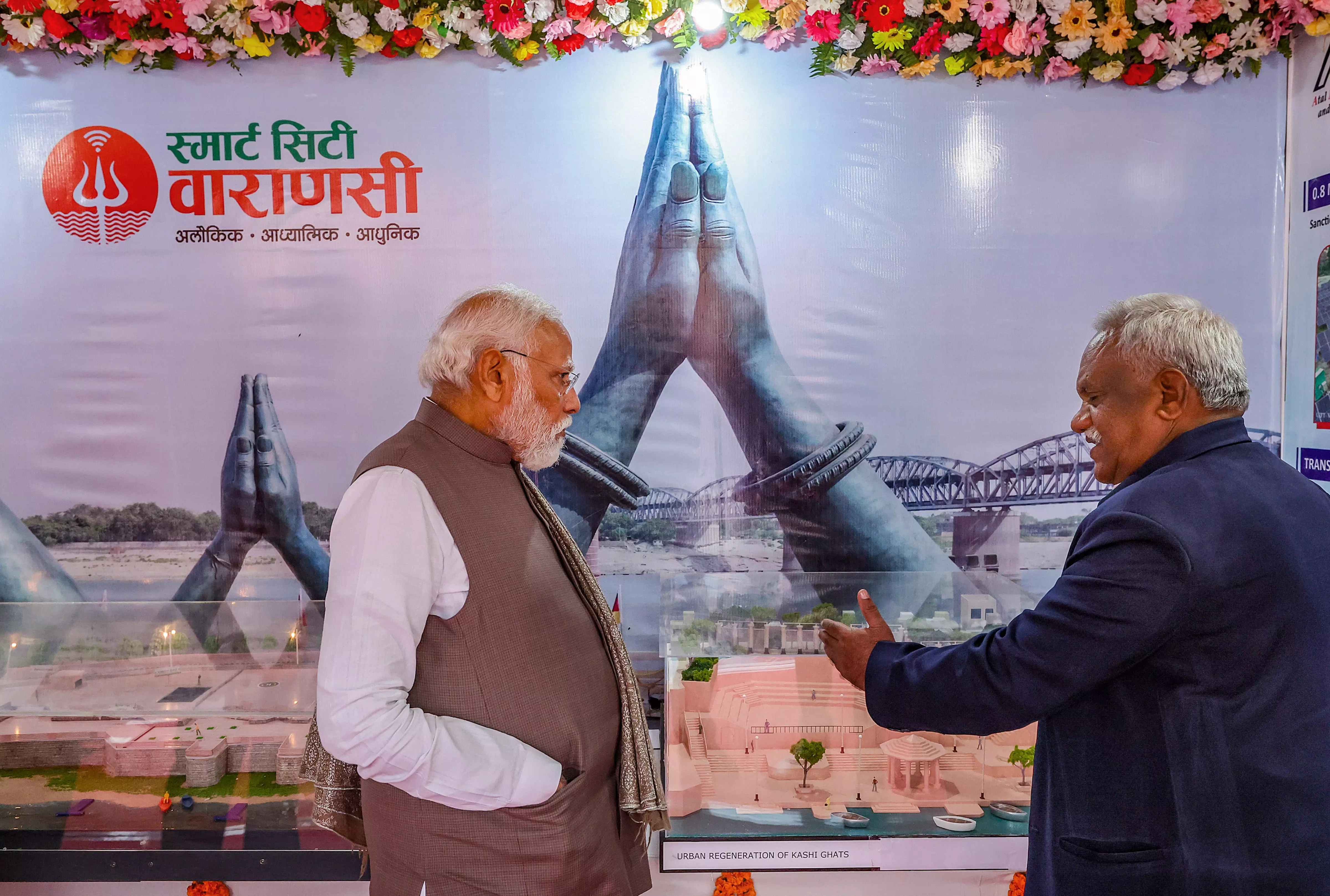Viksit Bharat SankalpYatra — A government at your doorstep

The recent working paper released by Niti Aayog on the National Multidimensional Poverty Index covering 12 indicators empirically proves that poverty in India declined from 29.17 per cent in 2013-14 to 11.28 per cent in 2022-23 with about 25 crore people breaking free from the clutches of poverty during this period. This bears testimony to the government of India’s single-minded focus on execution and delivery of various schemes in mission mode.
Every scheme that the government has conceived of and has subsequently implemented has ensured that the vulnerable, marginalised, and the poorest of the poor can avail of it and benefit. This approach has resonated with every proud Indian, beneficiary or otherwise, as it reflects the can-do attitude of the government and an empathetic nature with an emphasis on the welfare of every individual. Today, as a result of this untiring effort, led from the top by the Prime Minister, the nation is on target to attain complete saturation of welfare schemes across the country. The Viksit Bharat Sankalp Yatra was launched to “reach the unreached” and after seeing the participation of more than 15 crore citizens it stands as the most extensive outreach initiative anchored in the vision of antyodaya and inclusive governance.
India has indeed been leading by example over the past decade. We have shown the world that we have the scientific prowess and cutting-edge technology to be the first nation to land on the south pole of the Moon. At the same time, we are equally determined to ensure that every household has access to affordable power, clean drinking water, sanitary living conditions, and access to quality health and education. Some of the schemes such as the Direct Benefit Transfer (DBT) programme, the Jan Dhan Yojana, and the Pradhan Mantri Garib Kalyan Anna Yojana, have become international case studies and are acknowledged for their truly transformational nature. Our openness to share the underlying platforms and templates with other countries bears testimony to our commitment to the precept Vasudhaiva Kutumbakam — the world is one family. Our journey to being a Vishwaguru — a global leader — has been grounded in being a Vishwamitra, a universal friend.
One significant departure from the past is an active attempt in the government to find synergies across ministries and ensure that the silo-based approach makes way for an outcome-based “whole of government” approach. This is also manifested in the outcomes that we see in various schemes which not only show significant quantitative progress but also exceptional qualitative transformation that directly improves the well-being and socio-economic conditions of the people. This commitment to quality over quantity is evident across welfare schemes.
The Jal Jeevan Mission promotes regular testing of water samples at source and delivery points while covering more than 13 crore households. The PM Awas Yojana with over 4 crore rural and urban beneficiaries actively addresses all household needs of the beneficiaries and builds synergies with other government schemes such as Jal Jeevan Mission, Swachh Bharat Yojana, MGNREGA, Saubhagya Yojana, Ujjwala Yojana. Similarly, the 81 lakh street vendors availing loans through PM SVANidhi were promised insurance benefits under Pradhan Mantri Suraksha Bima Yojana and Pradhan Mantri Jeevan Jyoti Yojana, along with pension benefits under Pradhan Mantri Shram Yogi Maandhan Yojana.
Another significant change under Prime Minister Narendra Modi’s leadership is a visible shift from patronage-based opacity to transparent, rule-based eligibility while deciding on beneficiaries. Moreover, schemes such as Stand Up India, loans under MUDRA Yojana, or the drone pilot training of 15,000 SHGs under the Drone Didi programme go beyond mere financial assistance, actively involving individuals in shaping their aspirations. They do not provide mere financial assistance but help in shaping entrepreneurs who will become role models, symbolising the profound impact of empowerment over traditional approaches.
From a time when only 15 paise out of every government rupee reached the poor, we are now confidently advancing towards achieving 100 per cent coverage across all schemes. Presently, significant percentages of beneficiaries in various schemes, such as 71 per cent in Fasal Bima Yojana, 80 per cent in PM-KISAN, 45 per cent in rural housing, 58 per cent in scholarships, and 51 per cent in MUDRA loans, belong to Scheduled Caste, Scheduled Tribe or OBC communities. Many schemes that failed under the previous government have found traction as the Prime Minister brings credibility. For example, India had only 80 Jan Aushadhi Kendras till 2014 while today we are close to 10,000 Jan Aushadhi Kendras that provide affordable, quality generic medicines, with the renewed target of taking this number to 25,000. These statistics highlight targeted service delivery and a commitment to reaching marginalised sections of society.
In pursuit of Amrit Kaal, the Prime Minister aptly underscores the significance of four foundational pillars: Naari Shakti, Yuva Shakti, Kisan, and the poor families of India. The government is unflinching in its support of them. This emphasis reflects a holistic vision for national development, recognising the pivotal roles these pillars play in shaping a prosperous and inclusive future. Every Indian holds an unshakable faith in the assurance of the Prime Minister that is now popularly known as ‘Modi ki Guarantee’. The Viksit Bharat Sankalp Yatra is an inspiring journey that fulfills the gl(resolve) of the government by bringing it to the doorsteps of every citizen.
(G. Kishan Reddy is Union minister of tourism, culture and Development of North Eastern Region and represents the Secunderabad Lok Sabha constituency)
